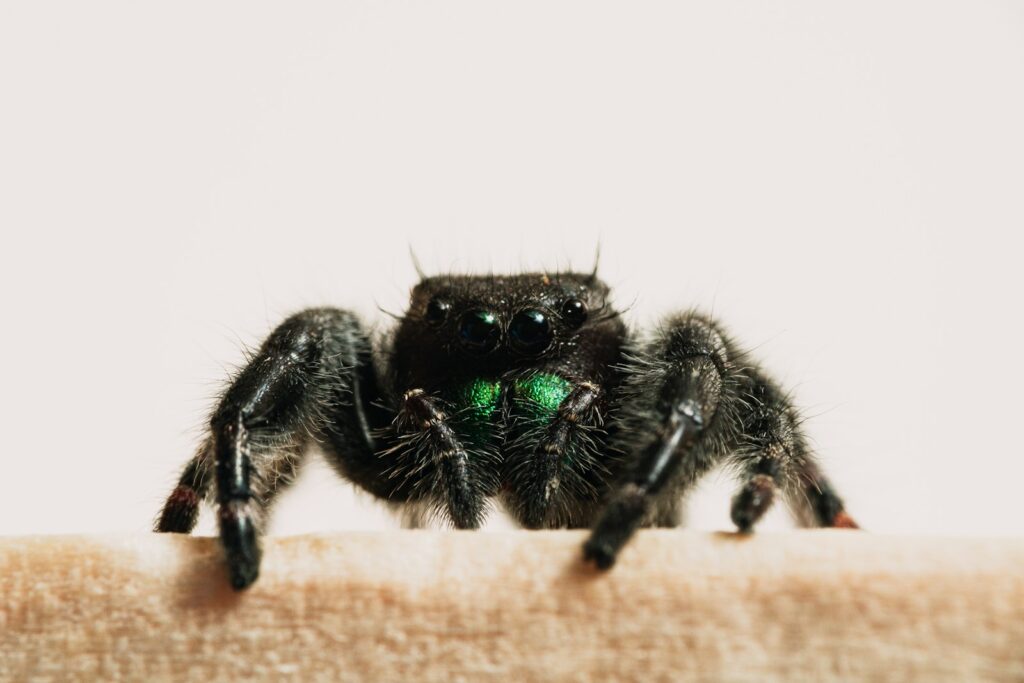For many people, spiders trigger an instinctive fear response. This is fueled by widespread misconceptions about these eight-legged creatures. While it’s true that some spider species can deliver painful or even dangerous bites, the vast majority of the world’s 48,000+ spider species are completely harmless to humans. Beyond their harmless nature, many spider species are surprisingly docile, with even friendly behaviors that make them fascinating to observe and, for some enthusiasts, suitable as wonderful pets.
In this article, we’ll explore some of the world’s most approachable spider species that challenge our preconceptions with their gentle temperaments, curious behaviors, and non-aggressive nature. Whether you’re an arachnophobe looking to overcome your fear or a potential spider keeper searching for the perfect eight-legged companion, these friendly species might just change how you view the spider world.
Jumping Spiders: The Puppies of the Spider World

Jumping spiders (family Salticidae) are widely considered the most charismatic and pet-like species of all spiders. With their exceptional vision provided by their four pairs of eyes, they observe their surroundings with a curious intensity that many find endearing. Unlike many spiders that rely on web-building, jumping spiders are active hunters who explore their environments, often displaying what appears to be genuine curiosity about humans. Their movements are deliberate and cat-like, with none of the erratic scurrying that makes many people uncomfortable around other arachnids. Most notably, many jumping spider species will turn to look at you, track your movements, and even seem to “study” you, creating an unusual sense of connection rarely experienced with invertebrates.
Phidippus audax: The Bold Jumper

Among jumping spiders, the Bold Jumper (Phidippus audax) stands out as particularly friendly and suitable for beginners interested in spider keeping. These striking black spiders with distinctive white spots and iridescent green or blue chelicerae (fangs) are naturally inquisitive and relatively comfortable around humans. Despite their common name, Bold Jumpers are typically quite gentle and rarely bite unless severely provoked or crushed. Their small size, usually less than an inch in length, combined with their active hunting style, makes them fascinating to watch as they explore and hunt in their enclosures. Many keepers report that Bold Jumpers seem to recognize their caretakers over time, often approaching the glass when their humans come near.
Tarantulas: Gentle Giants of the Spider World

Despite their intimidating size and appearance, many tarantula species are calm, slow-moving, and surprisingly easy to care for. They can be rewarding pets for those who enjoy observing rather than handling. Tarantulas from the Americas, known as New World species, are generally more docile than their African and Asian relatives. Their venom is mild, and bites rarely cause more than slight irritation, often no worse than a bee sting. When threatened, they rely on a unique defense: flicking tiny barbed hairs from their abdomen. These can irritate skin or eyes, but the gentlest species seldom use this tactic and prefer to stay still when approached calmly. While they don’t form bonds with humans, tarantulas often display steady, predictable behavior. Their slow movements and low-maintenance care make them a favorite among both new and experienced keepers. One of their most appealing traits is longevity. Some females can live for 20 to 30 years, offering long-term companionship that’s rare among invertebrates. With proper care and respect, tarantulas reveal a quiet elegance that challenges our fears.
Brachypelma hamorii: The Mexican Red Knee
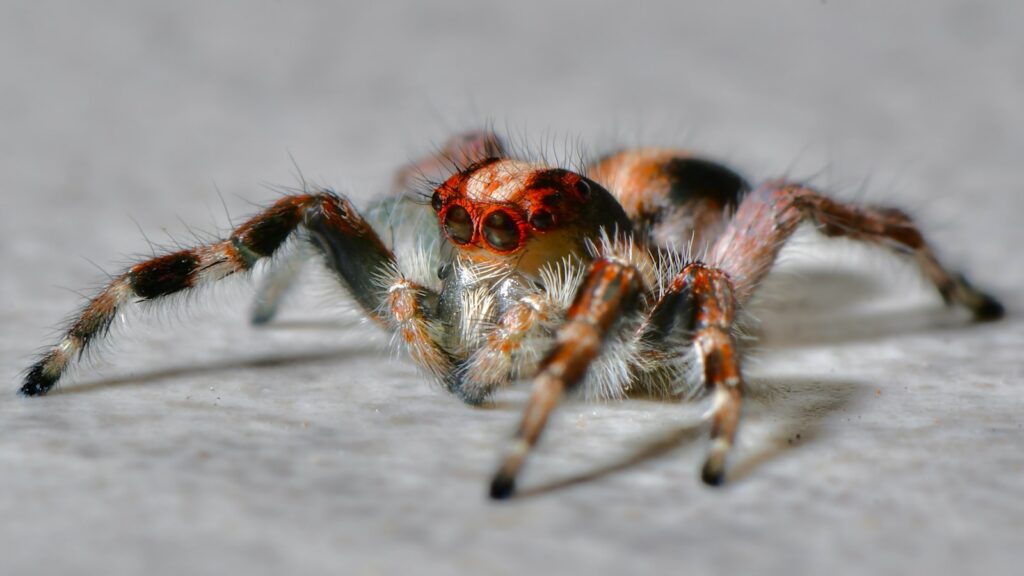
The Mexican Red Knee tarantula (Brachypelma hamorii) has earned its reputation as one of the most docile and beginner-friendly tarantula species. These stunning spiders, with their distinctive black bodies and vibrant orange-red knee patches, rarely display defensive behaviors and tend to move slowly and deliberately, making them less intimidating for new handlers. When threatened, their first response is typically to retreat rather than attack, and they rarely flick urticating hairs unless significantly stressed. Their calm nature allows for occasional, gentle handling, though experts still recommend minimizing handling to reduce stress on the spider. With proper care, female Mexican Red Knees can live up to 30 years in captivity, making them long-term companions for dedicated keepers.
Grammostola pulchripes: The Chaco Golden Knee

The Chaco Golden Knee Tarantula (Grammostola pulchripes) is another exceptionally docile species beloved by both novice and experienced spider enthusiasts. Native to the Chaco region of Paraguay and Argentina, these large tarantulas feature striking golden stripes on their legs that contrast beautifully with their darker body coloration. Their temperament is remarkably calm, with most specimens showing extreme reluctance to bite even when provoked. Chaco Golden Knees typically respond to disturbances by remaining motionless or slowly walking away, rarely displaying the threat postures or defensive behaviors seen in more high-strung species. Their combination of impressive size (leg spans can exceed 8 inches), beautiful coloration, and gentle disposition makes them one of the most popular tarantula species in the hobby.
Chromatopelma cyaneopubescens: The Green Bottle Blue
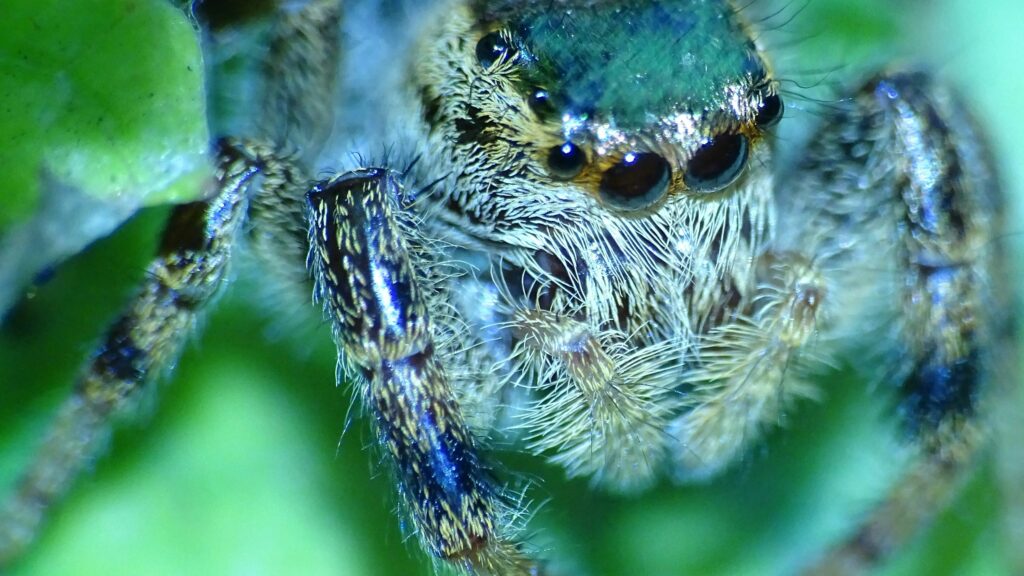
While slightly more skittish than the previously mentioned tarantulas, the Green Bottle Blue (Chromatopelma cyaneopubescens) makes up for it with spectacular coloration and fascinating behaviors that make it a joy to observe. These Venezuelan tarantulas feature an extraordinary combination of electric blue legs, green-blue carapace, and orange abdomen that makes them among the most visually striking spiders in the world. Though they move more quickly than some other beginner species and prefer not to be handled, they rarely display aggressive behavior toward keepers. Green Bottle Blues are renowned for their elaborate web-building behavior, creating extensive, hammock-like sheets and tunnels that transform their enclosures into works of art. Their active nature and beautiful webbing make them perfect “display pets” that can be appreciated without handling.
Aphonopelma chalcodes: The Arizona Blonde
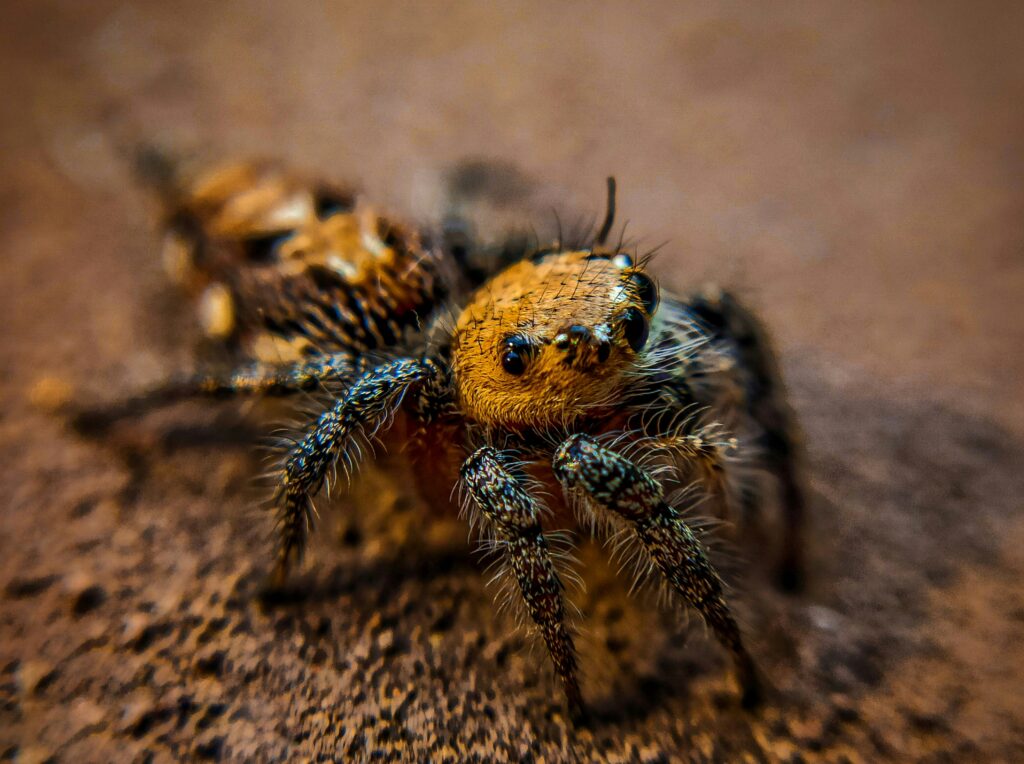
The Arizona Blonde Tarantula (Aphonopelma chalcodes) is a North American native with a well-deserved reputation for docility and calm behavior. These desert-dwelling spiders feature a light tan to golden carapace with darker legs and abdomen, giving them their “blonde” name and a distinctive appearance. Arizona Blondes are exceptionally tolerant of brief, gentle handling and rarely throw urticating hairs or show threat displays. Their deliberate movements and relaxed nature make them excellent for educational demonstrations and for those new to tarantula keeping. Unlike some more tropical species, they’re adapted to the variable climate of the American Southwest, making them somewhat more forgiving of minor husbandry mistakes that might stress other tarantula species.
Heteropoda lunula: The Giant Huntsman

Breaking from the tarantula theme, some species of huntsman spiders display surprisingly calm temperaments despite their intimidating size and speed capabilities. The Giant Huntsman (Heteropoda lunula) from Laos, while fast when startled, often shows a gentle disposition when accustomed to regular, respectful interaction. These flat-bodied spiders adapt well to captivity and frequently demonstrate a calm nature that belies their fearsome appearance. Unlike many non-tarantula species, certain huntsman spiders appear to become accustomed to routine interactions and may show reduced defensive responses over time. Their exceptional hunting abilities and dramatic speed bursts make them fascinating to observe, while their general reluctance to bite humans unless severely threatened makes them safer than their appearance might suggest.
Tegenaria domestica: The Domestic House Spider

The Domestic House Spider (Tegenaria domestica) is a common household species that demonstrates remarkably tolerant behavior toward human cohabitation. These medium-sized, brown spiders build funnel webs in corners but rarely venture into high-traffic areas of homes, preferring to remain in their retreats until nighttime hunting. Despite their ubiquity in human dwellings across much of the world, confirmed bites from these spiders are extremely rare, as they show a strong preference for retreat over aggression when disturbed. Many people live peacefully with these beneficial predators without ever experiencing negative interactions. Their effective control of insect populations makes them valuable allies in household pest management, consuming flies, mosquitoes, and other unwanted invertebrate visitors.
Pholcidae: Daddy Long-Legs or Cellar Spiders
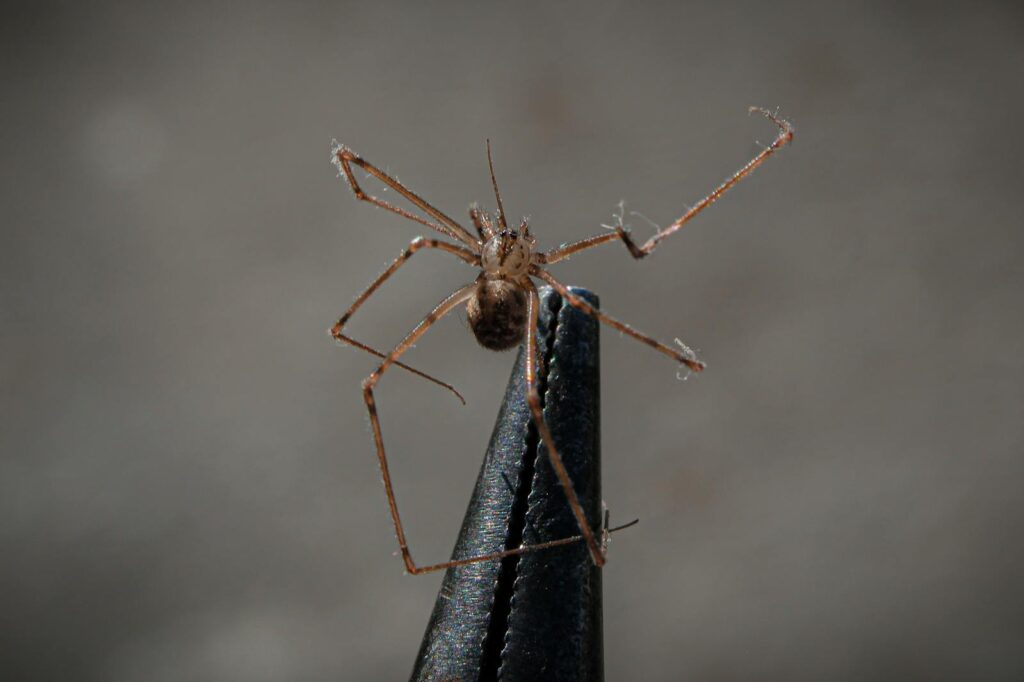
Cellar spiders, commonly known as daddy long-legs spiders (family Pholcidae), are among the most gentle and beneficial house spiders worldwide. These spindly-legged arachnids are physically incapable of biting humans in any meaningful way, despite persistent urban legends about their venom. Their extremely mild temperament makes them ideal “starter spiders” for those looking to overcome arachnophobia, as they move slowly, prefer to retreat, and display no aggressive tendencies. Cellar spiders actually prey upon other, potentially more problematic spider species, making them valuable allies in home pest management. Their distinctive vibrating defense, rapidly gyrating in their webs when disturbed, is completely harmless and serves only to make them harder for predators to target.
Araneus diadematus: The European Garden Spider
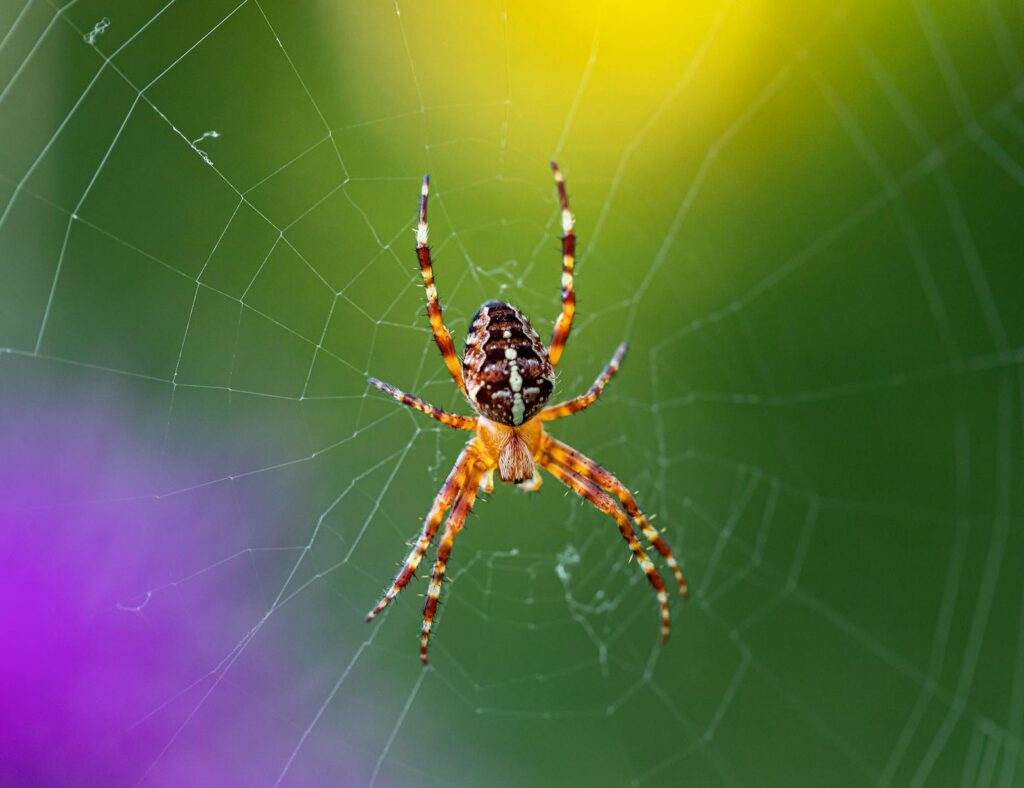
The European Garden Spider (Araneus diadematus), also known as the Cross Spider or Diadem Spider, is a common orb-weaver with a particularly gentle disposition toward humans. These beautiful garden residents, identified by the white cross-like pattern on their abdomens, construct the classic circular webs that many associate with spiders. Despite their visibility in gardens, they show no interest in approaching or biting humans, focusing entirely on capturing flying insects in their elaborate webs. Many gardeners develop fond relationships with “their” garden spiders, watching them grow throughout the season and appreciating their insect control services. Their predictable behavior—rebuilding webs in the same locations and remaining centered on their webs during daylight hours, makes them fascinating subjects for observation and photography.
Understanding Spider Behavior and Safety
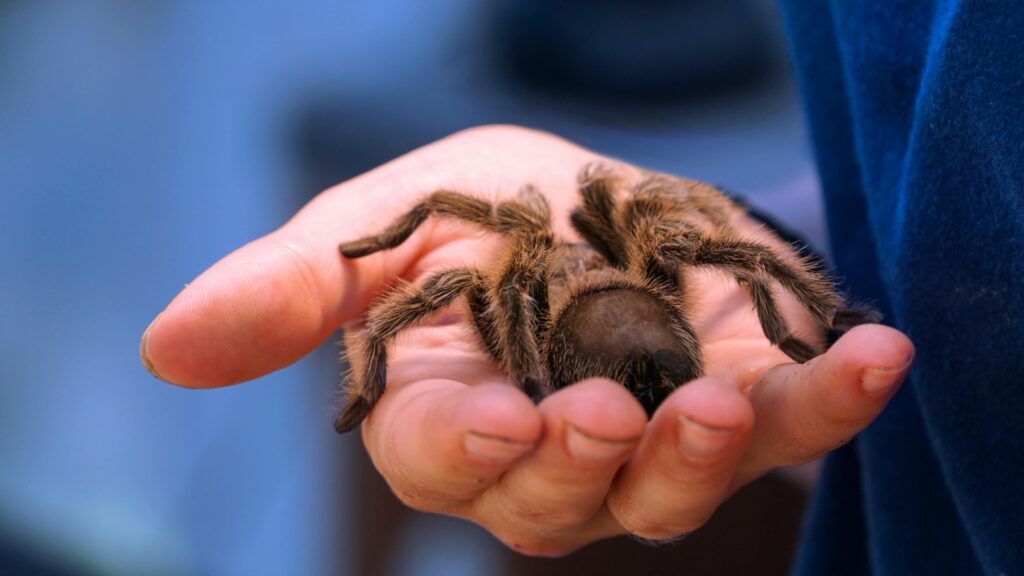
Even with the friendliest spider species, understanding proper interaction techniques is essential for both human and arachnid safety. Always approach spiders slowly and avoid making sudden movements or casting shadows that might startle them into defensive responses. For species that tolerate occasional handling, the “hand over hand” method, allowing the spider to walk from one open palm to another, minimizes the risk of dropping or injuring the spider. Remember that even docile spiders may bite if they feel trapped or crushed, so awareness of the spider’s position at all times is crucial during any interaction. Most importantly, respect that all spiders are wild animals with individual temperaments. What works with one specimen may not work with another, even of the same species.
Benefits of Friendly Spiders in Overcoming Arachnophobia
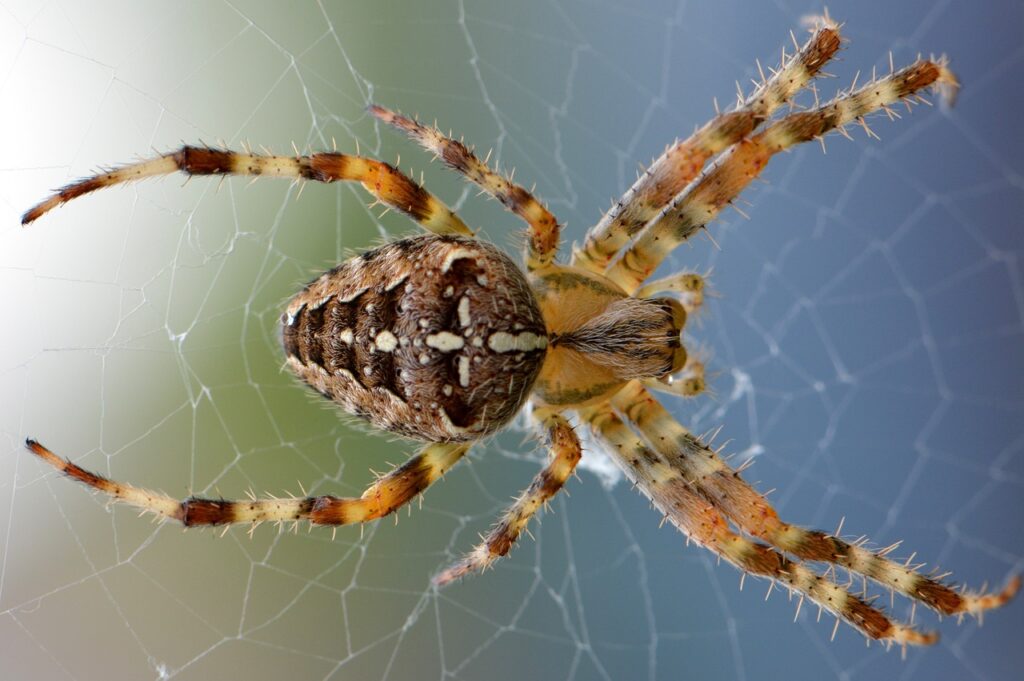
Interacting with gentle, non-threatening spider species has proven valuable in treating arachnophobia through exposure therapy approaches. Starting with the observation of calm species like jumping spiders or docile tarantulas allows fearful individuals to gradually challenge their anxiety responses in controlled settings. The predictable, non-aggressive behaviors of friendly spider species create opportunities for positive experiences that contradict the fear narratives many arachnophobes carry. Psychologists working with spider phobia often utilize species like the Mexican Red Knee tarantula in therapeutic settings precisely because of their calm movements and reluctance to display threatening behaviors. For many former arachnophobes, building a relationship with a friendly spider species has transformed debilitating fear into fascination and even affection for these misunderstood creatures.
Conclusion

The world of friendly, non-venomous spiders offers a fascinating counterpoint to common arachnophobic perspectives. From the puppy-like curiosity of jumping spiders to the gentle giant nature of docile tarantulas, these species demonstrate that spiders are far more diverse in behavior than many realize. Whether observed in gardens, tolerated in homes, or kept as fascinating pets, these eight-legged ambassadors help bridge the gap between human fear and appreciation of arachnid diversity. By focusing on these friendlier species, we can begin to appreciate the ecological roles, complex behaviors, and even the beauty that spiders bring to our world, all without the anxiety that typically accompanies spider encounters. Perhaps with greater understanding of these more approachable species, we can develop not just tolerance, but genuine appreciation for the remarkable adaptations and behaviors of these important invertebrates.

